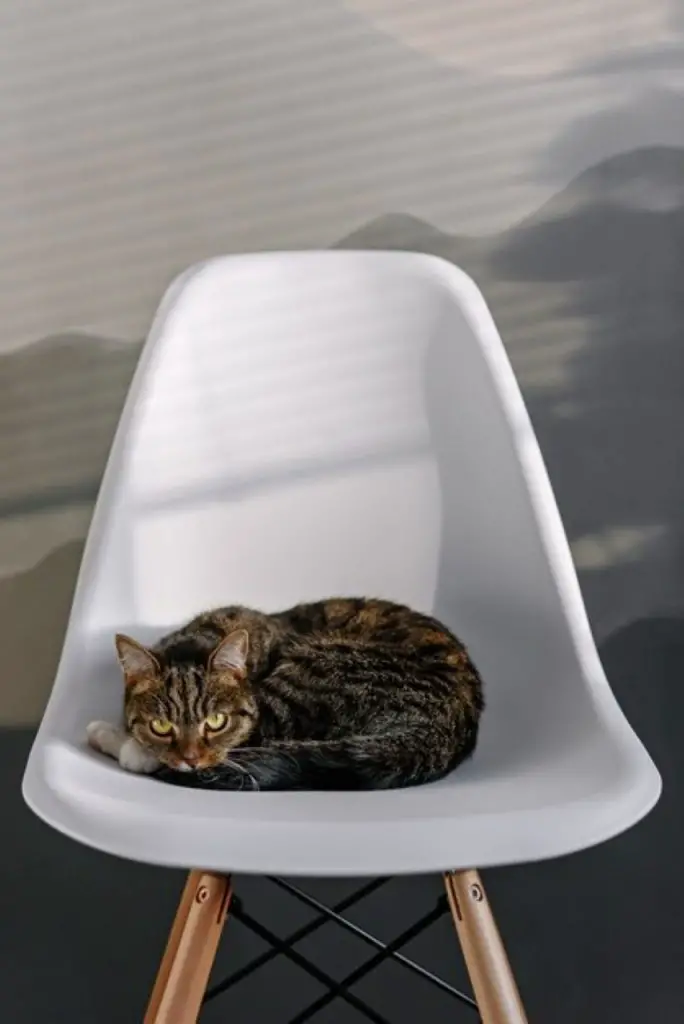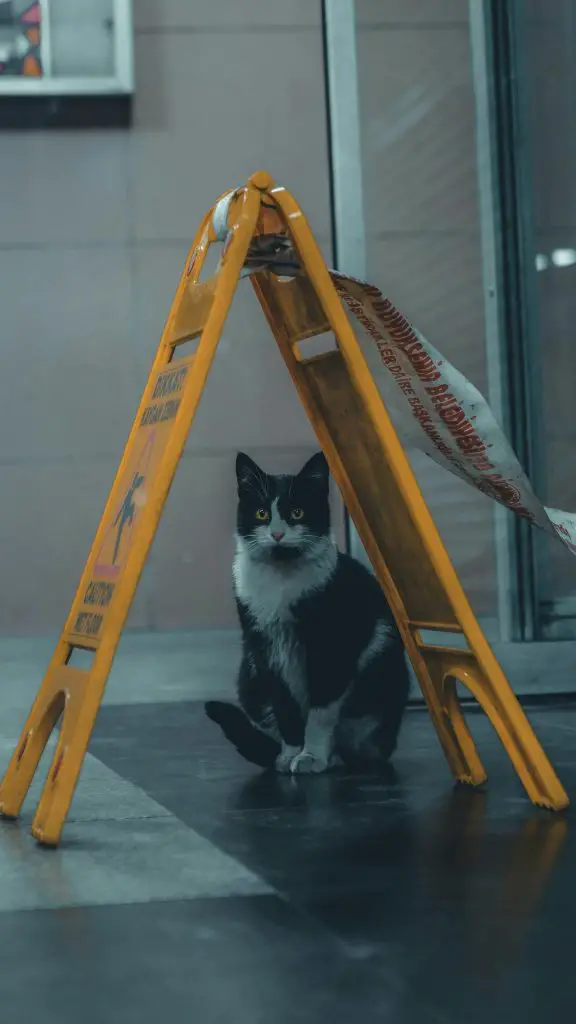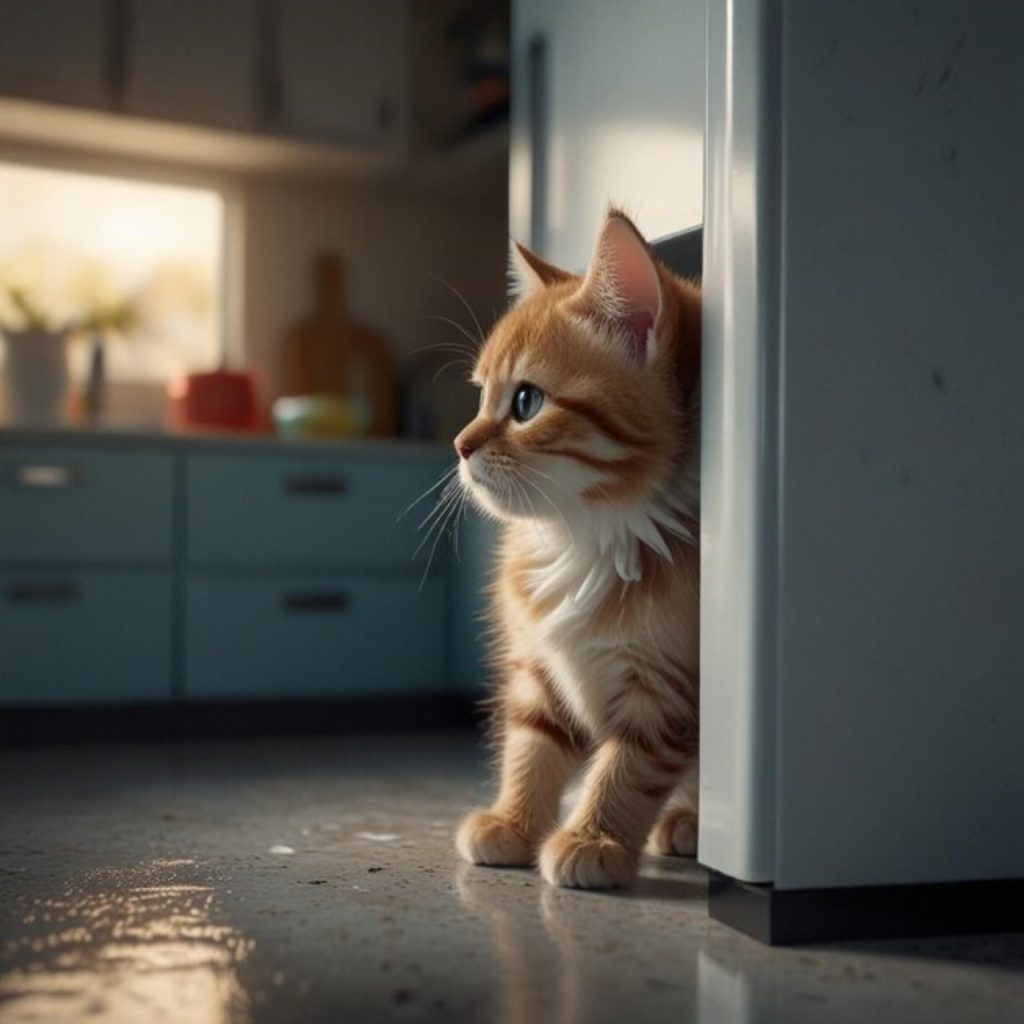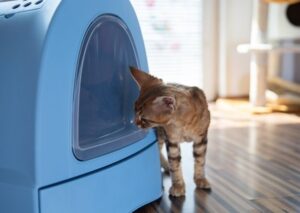
To cat-proof your house, start by securing loose wires and cords to prevent chewing and tangling, and protect your furniture and carpets from scratching and stains. Block access to high shelves and hazardous areas, such as the kitchen and pantry, to prevent accidents. Move toxic cleaning supplies and medications out of reach, and choose cat-resistant window treatments. Create a designated play zone for your cat to exercise and play, and inspect your home regularly to identify potential hazards. By taking these steps, you’ll be well on your way to creating a safe and happy home for your feline friend, and there’s even more you can do to guarantee their well-being.
Table of Contents
Secure Loose Wires and Cords
You’ll need to tie up or tape down any loose wires and cords, including phone chargers, laptop cables, and TV power cords, to prevent your cat from chewing on them or getting tangled up.
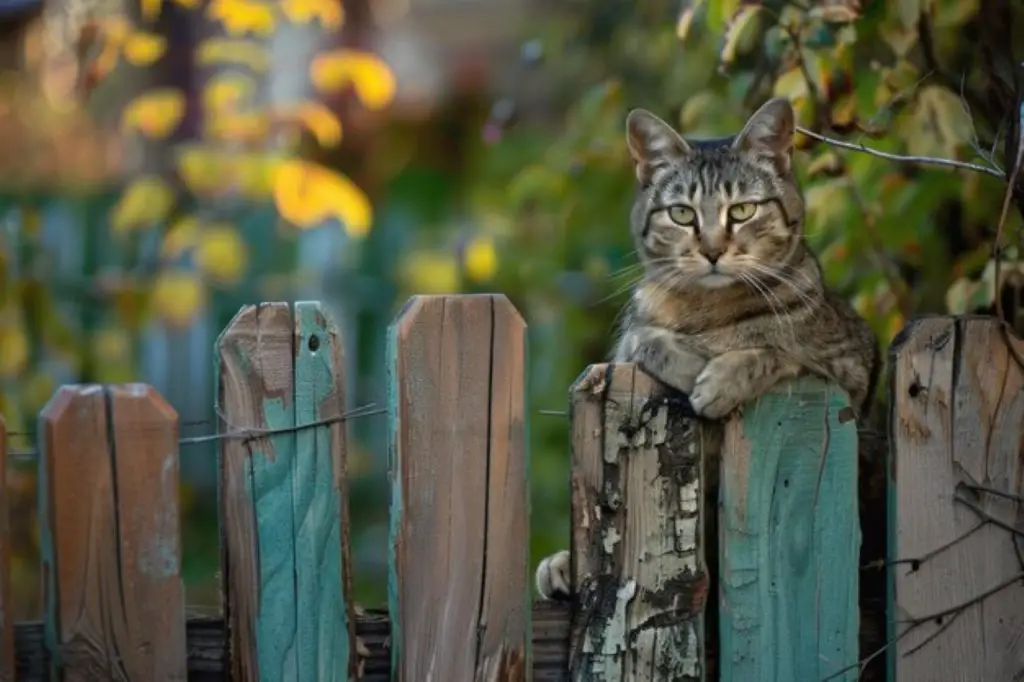
This is where wire management comes into play. Properly organizing your cords won’t only keep your home tidy, but also safeguard your cat’s well-being.
Begin by identifying the areas where cords are exposed, and then use cable ties, zip ties, or even duct tape to secure them.
Consider using cord covers to conceal cords and wires from your cat’s view. These covers are specifically designed to protect your cat from electrical shock or entanglement.
This post contains affiliate links. However all the information provided on this site are my own honest opinions. See more in Disclaimer.
Additionally, keep cords and wires away from your cat’s favorite rest spots or high-traffic areas. Make sure to check your cord management setup regularly to verify it’s still secure.
Protect Your Furniture and Carpets
Having secured your home’s wires and cords, it’s now important to focus on safeguarding your furniture and carpets, which can be just as vulnerable to your cat’s natural scratching and chewing instincts.
To protect your furniture, you should consider using furniture covers, which can prevent scratching and claw marks.
These covers are specifically designed to fit snugly over your furniture, making it difficult for your cat to access the underlying surface.
Additionally, you can also use scratch guards, which can be placed over the edges of your furniture to further prevent damage.
To safeguard your carpets, you can use carpet protectors, which can be applied to high-traffic areas or throughout your entire home. These protectors create a barrier between your cat’s paws and the carpet, making it easier to clean up spills and stains. You can also place area rugs over high-traffic areas to reduce the risk of damage.
Also See:
Block Access to High Shelves
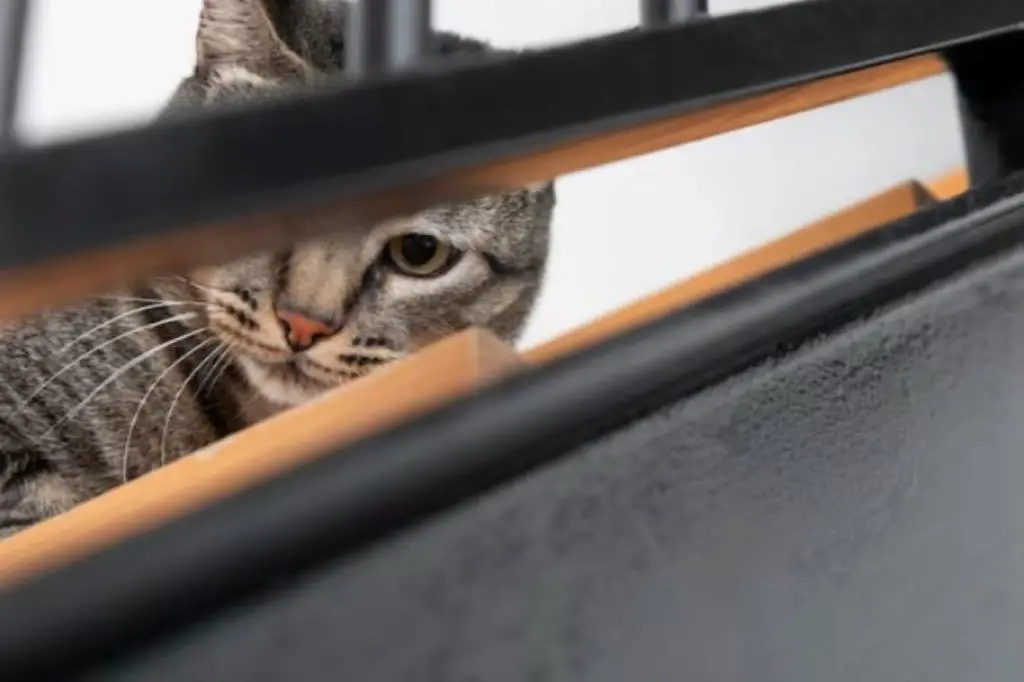
Blocking access to high shelves is an essential step in cat-proofing your home, as curious cats often view elevated surfaces as prime exploration territory.
You’ll want to prevent your feline friend from scaling shelves to avoid accidents and breakages. To do this, you can install shelf barrier options, such as shelf guards or barriers, to physically block access to high shelves.
Here are three cat climbing solutions to evaluate:
- Freestanding barriers: Place freestanding shelf barriers or room dividers around high shelves to create a physical barrier.
- Wall-mounted shelves: Replace freestanding shelves with wall-mounted ones that are too high for your cat to jump onto.
- Cabinet and shelf locks: Install locks on cabinets and shelves to prevent your cat from opening doors or drawers.
Move Hazardous Items to Safety
You’ll want to move hazardous items to safety to prevent your curious cat from coming into contact with them.
This means removing toxic substances like cleaning supplies, medications, and chemicals from your cat’s reach, and securely storing them in a safe location.
Toxic Substance Removal
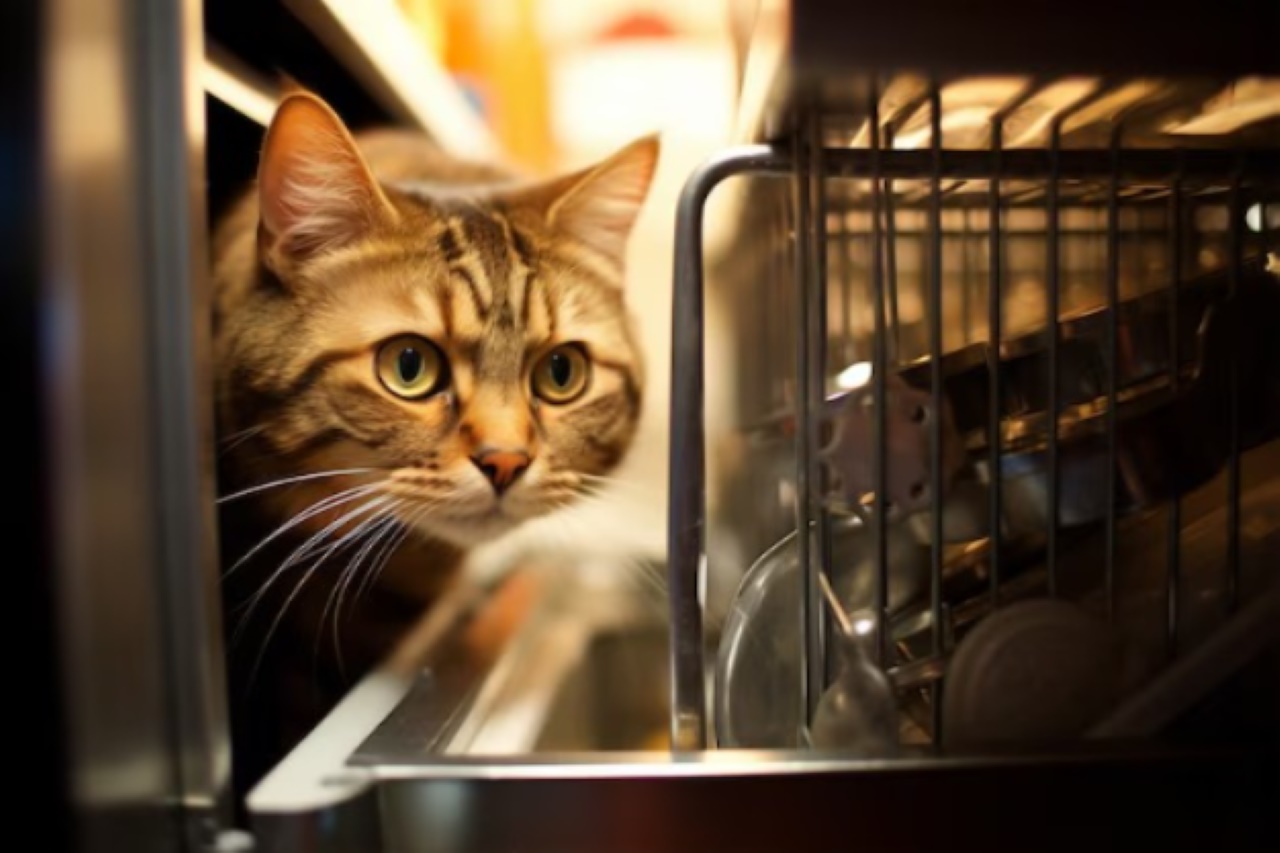
Remove all hazardous items, such as toxic cleaning supplies, pesticides, and medications, from your cat’s reach to prevent accidental ingestion.
You’ll also want to get rid of any toxic plants that can harm your cat if ingested. Some common toxic plants include lilies, snake plants, and philodendrons.
When it comes to toxic substance removal, it’s vital to be thorough. Here are three key areas to focus on:
- Cleaning supplies: Move all cleaning supplies to a high cabinet or a locked closet. This includes bleach, ammonia, and other strong chemicals that can harm your cat.
- Medications: Keep all medications, including prescription and over-the-counter medications, out of your cat’s reach. This includes pain relievers, vitamins, and supplements.
- Pesticides: Store pesticides, including insecticides and rodenticides, in a safe and inaccessible location. These substances can be highly toxic to cats, so it’s important to keep them out of reach.
Secure Heavy Objects
As you’re cat-proofing your home, securing heavy objects is essential to preventing them from tipping over and falling, which can cause serious injury to your cat.
Take a close look around the house to identify potentially hazardous items that need to be moved to safety.
You’ll want to focus on heavy furniture, appliances, and decorative items that could topple over if your cat jumps on them or tries to climb.
Consider using wall anchors to secure heavy furniture and shelves to the walls. This will prevent them from tipping over and reduce the risk of injury to your cat.
You can find wall anchors at most hardware stores or home improvement centers. They’re easy to install and can provide you with peace of mind knowing that your cat is safer.
Additionally, you can also consider moving heavy objects to a room that your cat doesn’t frequent, or blocking access to them with baby gates or pet barriers.
By taking these precautions, you can help prevent accidents and create a safer environment for your cat.
Choose Cat-Resistant Window Treatments
Most standard window treatments, such as curtains and blinds, can be easily damaged by curious cats. Therefore, selecting cat-resistant alternatives is essential to preserving your home’s decor and ensuring your cat’s safety.
When choosing window treatments, evaluate the fabric types and color choices that will withstand your cat’s scratching and climbing.
You’ll want to opt for durable, easy-to-clean materials that can resist scratches and stains. Here are three options to evaluate:
- Bamboo shades: Bamboo is a sustainable, durable material that can withstand scratches and bumps. It’s also easy to clean and maintain.
- Solar screens: Solar screens are made of a sturdy mesh material that can resist scratches and tears. They’re also great for blocking out UV rays and reducing heat gain.
- Faux wood blinds: Faux wood blinds are made of a durable, synthetic material that can withstand scratches and stains. They’re also easy to clean and maintain.
Safeguard Your Kitchen and Pantry
As you cat proof your house, you’ll want to pay special attention to your kitchen and pantry, where tempting foods and hazardous substances can put your curious cat at risk.
You’ll need to secure food and trash to prevent your cat from getting into them, and lock cabinets and drawers to keep toxic substances and cleaning supplies out of reach.
Secure Food and Trash
To prevent your curious cat from getting into trouble, you’ll want to cat proof your kitchen and pantry, focusing on securing food and trash that can be hazardous to their health.
Your kitchen and pantry are filled with tempting smells and tastes that can be irresistible to your cat. To keep them safe, you’ll need to secure food storage and trash bins.
Here are three ways to secure food and trash in your kitchen and pantry:
Trending in Cats:
- Use airtight containers: Store food in airtight containers to prevent your cat from accessing it. This is especially important for toxic foods like chocolate, grapes, and raisins.
- Secure trash bins: Keep trash bins tightly sealed and out of reach of your cat. Consider using trash bins with locking lids or storing them in a separate room.
- Clean up crumbs and spills: Regularly clean up crumbs and spills to prevent your cat from being attracted to the kitchen. This will also help prevent pests and keep your kitchen clean.
Lock Cabinets and Drawers
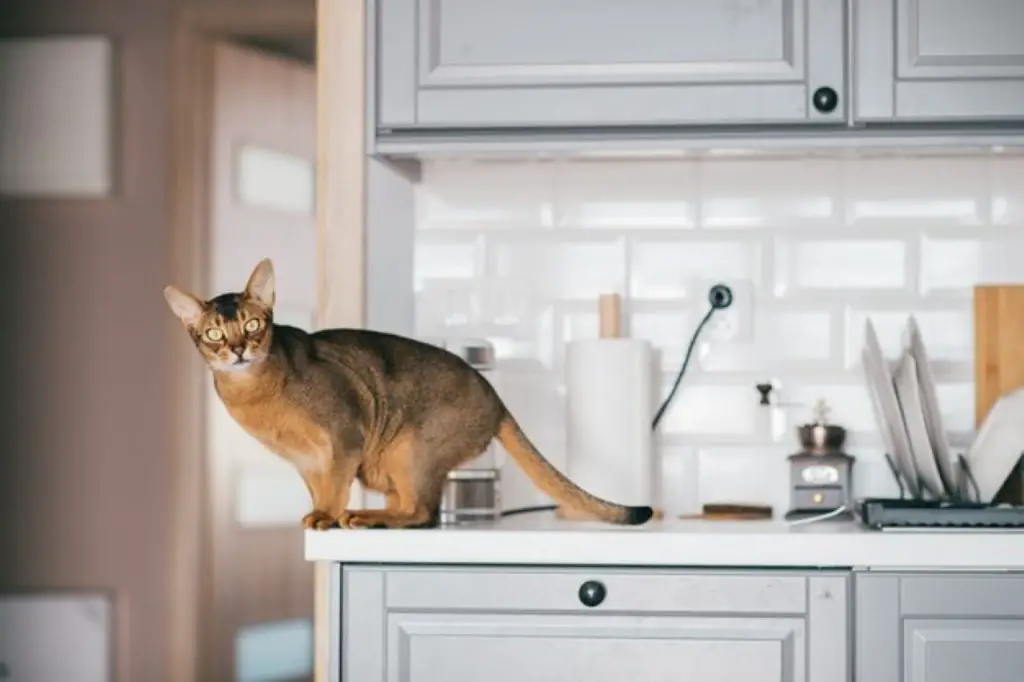
Your cat’s curiosity and agility can lead them to open or nudge cabinets and drawers, making it vital that you lock and secure these kitchen and pantry storage spaces.
Cats can easily access chemicals, cleaning supplies, and trash, posing a risk to their health and safety.
Installing cat-friendly locks on your cabinets and drawers will help prevent accidents and keep your pet safe.
You can also consider using drawer organizers to keep your kitchen utensils, cleaning supplies, and other items out of your cat’s reach. This won’t only keep your cat safe but also keep your drawers tidy and organized.
When shopping for locks, look for those that are specifically designed for pet owners, as they’re usually easy to install and don’t require any major renovations.
Additionally, make sure to test the locks to verify they’re secure and won’t come loose with a little nudge from your curious cat.
Create a Cat Play Zone
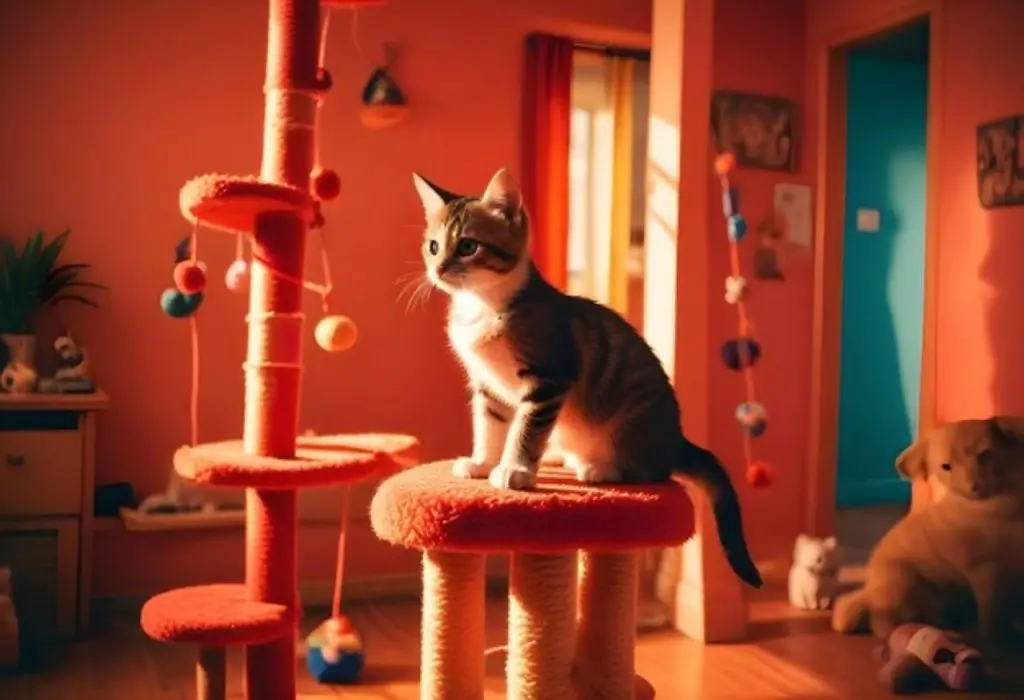
Designating a specific area of the house as a cat play zone helps funnel your cat’s energy and curiosity into a single, safe space.
This zone will be your cat’s go-to area for exercise, stimulation, and relaxation, reducing the likelihood of them getting into mischief elsewhere in the house.
To create an engaging cat play zone, you’ll need the right equipment. Here are three essentials to get you started:
- Cat furniture: Provide sturdy scratching posts, climbing structures, and cozy nooks for your cat to explore and claim as their own.
- Interactive toys: Engage your cat’s natural hunting instincts with puzzle toys, feather wands, and laser pointers.
- Comfortable bedding: Offer plush blankets or beds specifically designed for cats, ensuring they’ve a comfortable spot to rest and recharge.
Inspect Your Home Regularly

Regular inspections of every room, closet, and corner help you identify potential hazards, pinpoint areas where your cat is getting into mischief, and make adjustments to prevent future problems.
As you walk through your home, pay attention to your cat’s behavior and body language. Are they scratching furniture or carpets? Are they trying to climb up curtains or leap onto high shelves?
These observations will help you understand their needs and preferences.
Frequent Questions
“You’ll be unraveling the cat-proofing puzzle in no time! Effective time management and meticulous safety considerations will have you purr-fectly securing your home within a few days to a week, depending on the size of your space.”
You can cat proof on a small budget by exploring cost-effective solutions and DIY strategies, such as repurposing household items and shopping second-hand, to create a safe and secure environment for your feline friend.
Carefully considering cat behavior, you can craft cunning safety measures. Generally, you won’t need professional help, but if you’re unsure or overwhelmed, consulting a certified animal behaviorist or a handyman can provide peace of mind.
You can find cat proofing products for renters that don’t require permanent changes. Look for temporary barriers, such as freestanding gates, and pet safe decor that can be easily removed when you move out, like cord protectors.
As you envision a cat-proofed home, you’ll weave a tapestry of cat-friendly decor and aesthetic solutions, blending functionality with style, creating a beautiful and safe space where your feline friend can thrive without compromising your home’s charm.


